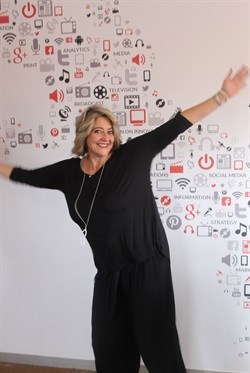
Here’s the Wikipedia definition:
Media monitoring is the process of reading, watching or listening to the editorial content of media sources on a continuing basis, and then identifying, saving and analysing content that contains specific keywords or topics.Here’s mine:
Media monitoring is a gathering of content across certain media platforms - this can be print, broadcast, online news or social media. Monitoring takes two forms, editorial monitoring (what people/journalists are saying) or advertising monitoring. That’s the first step.
Let’s talk about editorial monitoring: Once the platform is effectively collected, it needs to be converted into a searchable format for various technology solutions to refine that data so that it is relevant for a specific brand/industry. The question is then, what do you do with that data, how can it help? For the most part, it is used to safeguard media reputation (by using right to reply) and to assess the effectiveness of PR effort.
Media interaction has to be lightning fast. You have to be quick and, more importantly, consistent to assist your client the best way to safeguard their reputation and meet their needs.
Media monitoring is not a nice-to-have but an essential tool for each business, especially in crisis situations. It is impossible for an individual to keep track of a story running out of control, as there are simply too many outlets, and in the case of big corporates, a monthly clip count can amount to more than 10,000 per month.
For Bizcommunity, we would use a source rank to calculate the value.
The world has moved away from AVE and is now increasingly using 'source rank' (as one example), which entails that the circulation, readership, advertising frequency, editorial changes, target audience, traffic to a site, unique visitors, page impressions, time spent on a site, etc. are included in the ‘banding’ process and are banded into groups of 1-10. The same methodology is used for online, except that in South Africa, Source Rank 1 would be Sunday Times, Daily Sun, IOL.co.za and News24.com, as examples. Each band draws a value of R5,000 (that measure is given after careful counsel with clients).
Bizcommunity has been allocated a source rank of 2, which equals a rand value of R45,000.
The problem we have with AVE and source rank is that they are indicators of how well content performs, but there is no rate card for this type of measurement, which means that each media monitoring agency will allocate a different value to the results. There is a massive need for regulation in the industry to avoid the discrepancies we currently face.
We found that PR and communication professionals tailor their strategies according to the product/company they market, as well as the medium:
PR and communication professionals tailor their message according to the medium. A big corporate releasing results will use mostly print, online and broadcast (business media), while their sports sponsorship of a certain team will be publicised more in print, online and social media (especially Twitter).
When a new client signs, we assist them in compiling a keywording brief, consisting of their brand or company name, spokespeople, social media handles and hashtags.
Knowledgeable experts take that brief and build searches on our electronic dashboard. These searches will pull the data from our media bouquet through the keywords we have inserted in the search. The client has 24-hour access to the media on their dashboard.
We set up a newsletter which alerts the client to any new clips, straight to their inbox, offering clients the opportunity to stay abreast of the latest news happenings. We also have a mobile app which feeds through to the client’s phone, which keeps them up-to-date as the news item is harvested.
Thanks Tonya! Keep your eyes peeled for part two of this media monitoring series.